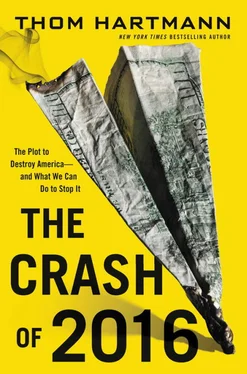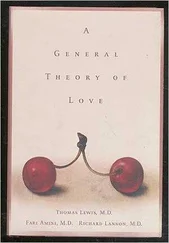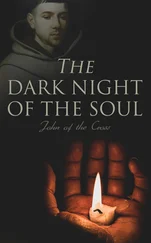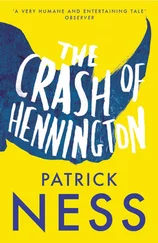Sure enough, after the Great Depression, our nation for the first time saw sustained financial stability and the rise of a remarkable American middle class. Because more people had more money in their pockets, they spent more as consumers, and industries all around the nation expanded and further employed more people.
Recessions were short-lived, and economic growth was sustained. Things were working the way they were supposed to. This was the birth of American Social Democracy—or New Deal Economics—a capitalist system that still bred winners and losers but ensured that losers wouldn’t be condemned to death and that winners wouldn’t have the power to bring down the entire system.
In fact, the entire world adopted a sort of Keynesian economic philosophy, from market economies like in America, where a government simply acted like a referee intervening whenever things got a little too hot or too cold, to economies such as those of the Democratic Socialist states of northern Europe, where the government was much more involved in virtually every aspect of the economy.
But not everyone bought into what Keynes was selling—most notably, a colleague of Keynes’s at King’s College, Cambridge, Friedrich Hayek, who went in the opposite direction.
The two men knew each other very well; they spent many nights perched atop the roof of the King’s College chapel amid German bombing raids during the height of World War II. As the Germans dropped firebombs onto England, Keynes and Hayek were given the task of disposing of, armed only with shovels, any bombs that might land on the chapel before they could be detonated. Keynes was over sixty years old at the time, and Hayek was in his forties—neither man was really qualified for the job. But luckily, they never needed to use their bomb shovels.
Hayek promoted what was called neoliberalism, an economy based solely on free markets. Yes, despite the catastrophic economic damage caused repeatedly by unrestrained free markets, wealth inequality, and dismantled social safety nets, those promoting this destructive ideology never gave up.
Neoliberals like Hayek believed that markets free from democratic intervention could somehow make everyone richer and create an economic utopia, and this belief persists despite its failure everywhere it’s been tried around the world.
The neoliberals were overwhelmingly rejected around the world after the last Great Crash and war—banished to the fringes of economic thinking. But, from those fringes, they plotted their comeback.
In 1947, two years after the war ended, Friedrich Hayek gathered a large group of economists, historians, journalists, and businessmen to a meeting in Mont Pelerin, Switzerland.
A man named Milton Friedman was one of those economists in attendance.
He’d graduated high school almost twenty years earlier, in 1928, one year before the stock market crash, and received his college education at Rutgers University and the University of Chicago during the height of the Great Depression.
Friedman was the first member of his family to go to college, and the economic upheaval under way in America motivated him to study economics. As he said, “Put yourself in 1932 with a quarter of the population unemployed. What was the important urgent problem? It was obviously economic and so there was never any hesitation on my part to study economics.” 44
Out of school, Friedman went to work for Franklin Roosevelt’s New Deal government, first for the National Resources Committee, then the National Bureau of Economic Research, and then the Treasury Department. At the time, he believed in the New Deal in a broad sense, and in the Keynesian economic theory underpinning it.
But after the war, as the Great Crash twenty years earlier began receding from collective memory, Friedman found himself drawn to Hayek’s religion of free markets.
And so he was on hand in 1947 for the first meeting of what would be known as the Mont Pelerin Society. The purpose was clear. Hayek saw the momentum building around the world for socialist revolutions and more control of markets, and he wanted to cut it off.
Friedman described this meeting, and his tone foreshadows the tone used in an infamous twenty-four-years-later memo by Lewis Powell.
“The point of the meeting was very clear,” said Friedman. “It was Hayek’s belief, and the belief of other people who joined him there, that freedom was in serious danger.” 45
The reason, Freidman said, was because “during the war, every country had relied heavily on government to organize the economy, to shift all production toward armaments and military purposes. And you came out of the war with the widespread belief that the war had demonstrated that central planning would work.
“And so there were strong movements everywhere,” said Friedman. “In Britain a socialist [Clement Attlee] had won the election. In France there was indicative planning that was [in] development. And so everywhere, Hayek and others felt that freedom was very much imperiled, that the world was turning toward planning and that somehow we had to develop an intellectual current that would offset that movement.
“Essentially, the Mont Pelerin Society,” said Friedman, “was an attempt… to start a movement, a road to freedom as it were.”
But what Hayek was unable to do, mainly because he was operating with the catastrophic consequences of his free-market philosophy still fresh in everyone’s mind, Friedman would do—and that’s lead a global counterrevolution against controlled capitalism, and in particular against the New Deal.
He took Hayek’s message to his alma mater, the University of Chicago, where he and other free-marketeers would banter among themselves in an echo chamber while the rest of the world forged ahead with successful “socialized” economies.
But the “Chicago Boys,” as they would soon be called, led by Milton Friedman, would be ready at a moment’s notice to reintroduce neoliberalism to the world. He just had to be patient and wait for the Great Forgetting—or a crisis.
In his 1962 book Capitalism and Freedom , Milton Friedman wrote about crises.
“There is enormous inertia—a tyranny of the status quo—in private and especially governmental arrangements.” 46That “status quo” he was referring to was Kennedy’s America when the middle class was on the rise and our nation was the envy of the entire non-communist world.
“Only a crisis—actual or perceived,” Friedman wrote, “produces real change.”
Friedman was a crisis guy. He knew how transformational crises could be, and exploited them any chance he got. As he wrote, “Our basic function… [is] to develop alternatives to existing policies, to keep them alive and available until the politically impossible becomes politically inevitable.”
Naomi Klein, in her book The Shock Doctrine , chronicles Friedman’s exploitations of crises to promote free-market capitalism. “Some of the most infamous human rights violations of this era, which have tended to be viewed as sadistic acts carried out by undemocratic regimes,” Klein explains, “were in fact either committed with the deliberate intent of terrorizing the public or actively harnessed to prepare the ground for the introduction of radical free-market ‘reform.’” 47
These so-called free-market reforms promoted by the members of the Mont Pelerin Society and later the Chicago Boys do not constitute a legitimate economic theory, as they’ve never worked anywhere they’ve been tried, anywhere in the world. They constitute a religion.
Yet this religion actually serves as the intellectual underpinning of the Economic Royalist plan for society. And it would seem to be the spear tip for reclaiming power by the Economic Royalists.
Читать дальше












